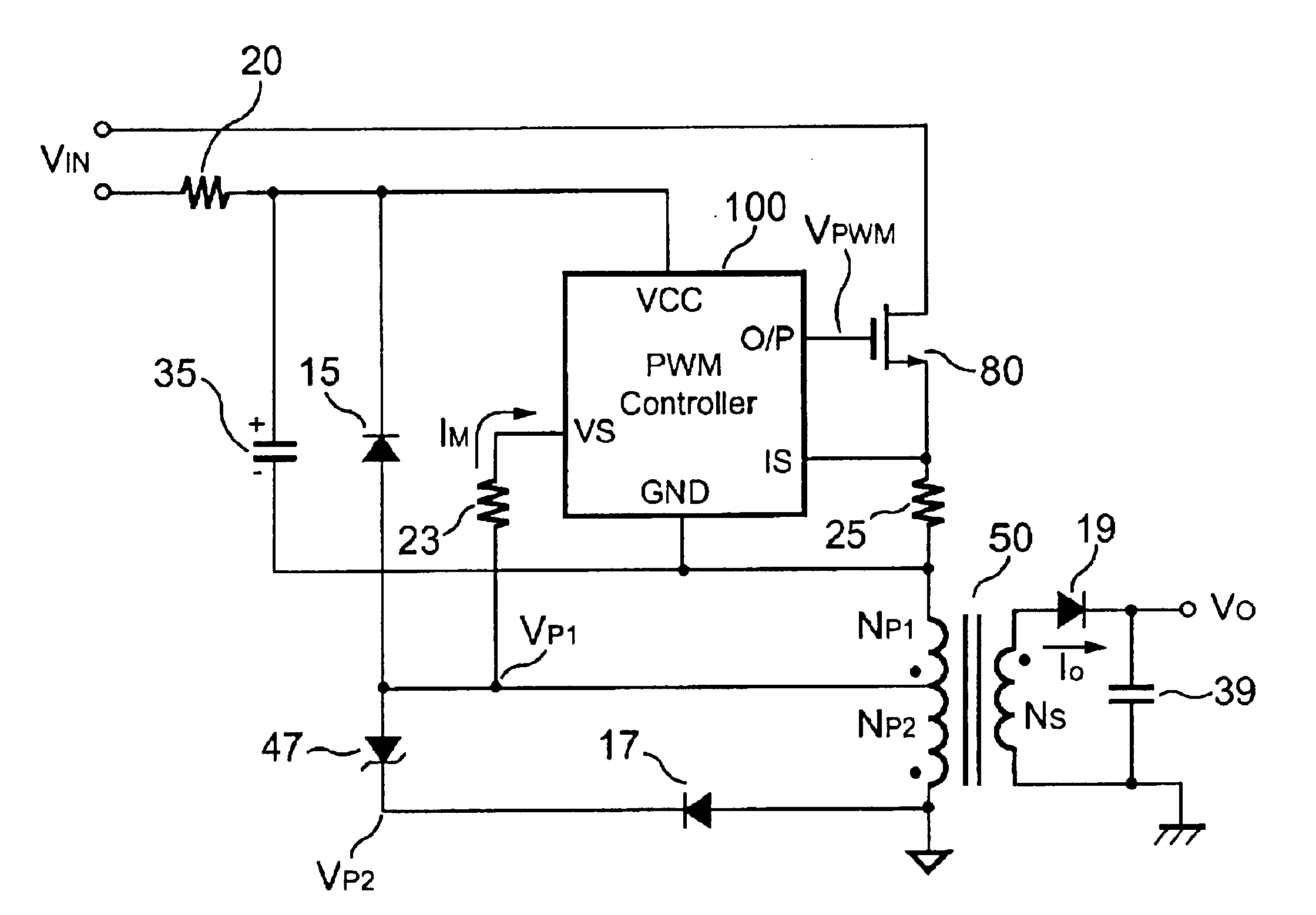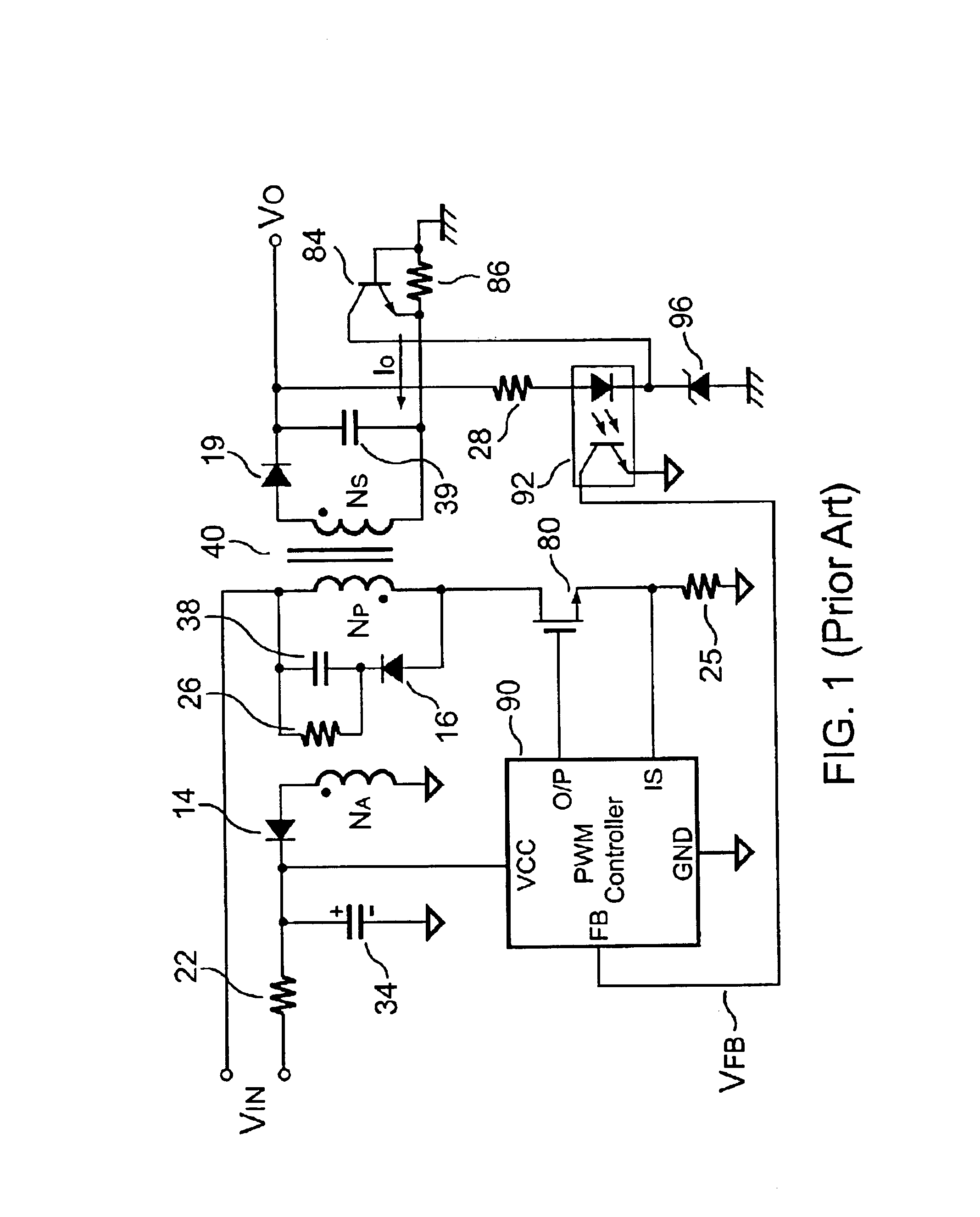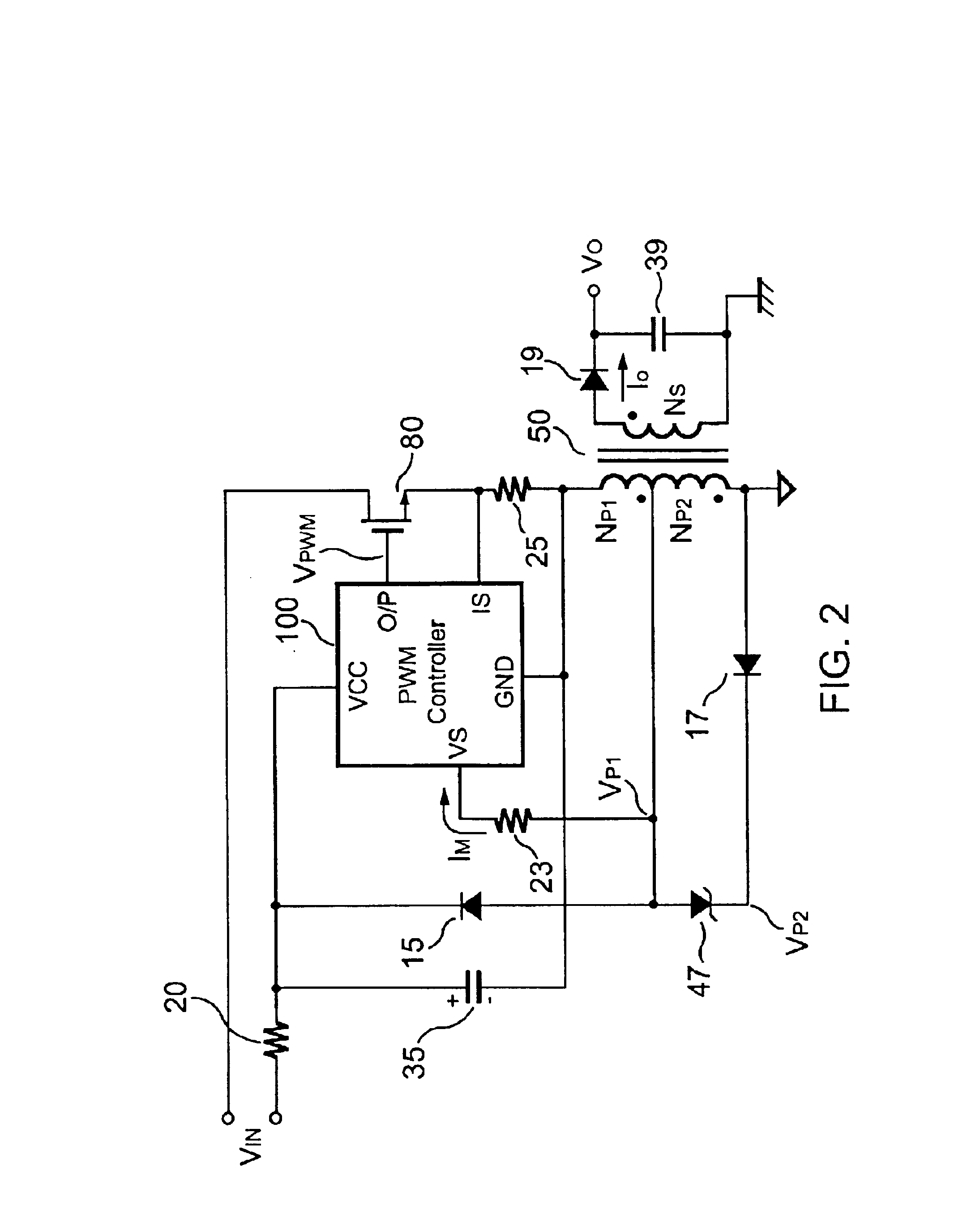Flyback power converter having a constant voltage and a constant current output under primary-side PWM control
a flyback power converter and constant current technology, applied in the field of switching mode power converters, can solve the problems of high power consumption, difficult to the inability to easily reduce the size of the flyback power converter, so as to achieve accurate regulation of the output voltage
- Summary
- Abstract
- Description
- Claims
- Application Information
AI Technical Summary
Benefits of technology
Problems solved by technology
Method used
Image
Examples
Embodiment Construction
FIG. 1 shows a traditional flyback power converter. A capacitor 34 is connected to a PWM controller 90. The capacitor 34 is charged via a resistor 22. The PWM controller 90 will be started up once its supply voltage VCC is higher than the start-threshold voltage. When the PWM controller 90 starts to operate, it will output a PWM signal to drive a MOSFET 80 and a transformer 40. Meanwhile, an auxiliary winding NA of the transformer 40 will supply the supply voltage VCC via a rectifier 14. A resistor 25 converts a switching current of the transformer 40 into a voltage signal for PWM control and over-power protection. An output of an optical-coupler 92 supplies the feedback voltage VFB.
The output voltage VO and the Zener voltage of a Zener diode 96 drive an input of the optical-coupler 92 via a resistor 28 to complete the feedback loop. The magnitude of the feedback voltage VFB of the PWM controller 90 determines the on-time (TON) of the PWM signal and regulates the output power. A tra...
PUM
 Login to View More
Login to View More Abstract
Description
Claims
Application Information
 Login to View More
Login to View More - R&D
- Intellectual Property
- Life Sciences
- Materials
- Tech Scout
- Unparalleled Data Quality
- Higher Quality Content
- 60% Fewer Hallucinations
Browse by: Latest US Patents, China's latest patents, Technical Efficacy Thesaurus, Application Domain, Technology Topic, Popular Technical Reports.
© 2025 PatSnap. All rights reserved.Legal|Privacy policy|Modern Slavery Act Transparency Statement|Sitemap|About US| Contact US: help@patsnap.com



